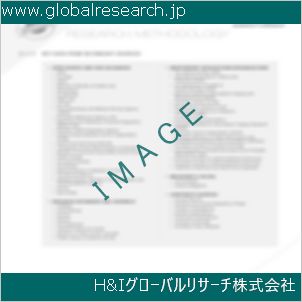Table of Contents
1 Industry Overview of Boricacid
1.1 Definition and Specifications of Boricacid
1.1.1 Definition of Boricacid
1.1.2 Specifications of Boricacid
1.2 Classification of Boricacid
1.3 Applications of Boricacid
1.3.1 Nuclear Application
1.3.2 Non-Nuclear Application
1.4 Industry Chain Structure of Boricacid
1.5 Industry Overview and Major Regions Status of Boricacid
1.5.1 Industry Overview of Boricacid
1.5.2 Global Major Regions Status of Boricacid
1.6 Industry Policy Analysis of Boricacid
1.7 Industry News Analysis of Boricacid
2 Manufacturing Cost Structure Analysis of Boricacid
2.1 Raw Material Suppliers and Price Analysis of Boricacid
2.2 Equipment Suppliers and Price Analysis of Boricacid
2.3 Labor Cost Analysis of Boricacid
2.4 Other Costs Analysis of Boricacid
2.5 Manufacturing Cost Structure Analysis of Boricacid
2.6 Manufacturing Process Analysis of Boricacid
3 Technical Data and Manufacturing Plants Analysis of Boricacid
3.1 Capacity and Commercial Production Date of Global Boricacid Major Manufacturers in 2023
3.2 Manufacturing Plants Distribution of Global Boricacid Major Manufacturers in 2023
3.3 R&D Status and Technology Source of Global Boricacid Major Manufacturers in 2023
3.4 Raw Materials Sources Analysis of Global Boricacid Major Manufacturers in 2023
4 Capacity, Production and Revenue Analysis of Boricacid by Regions, Types and Manufacturers
4.1 Global Capacity, Production and Revenue of Boricacid by Regions 2019-2024
4.2 Global and Major Regions Capacity, Production, Revenue and Growth Rate of Boricacid 2019-2024
4.3 Global Capacity, Production and Revenue of Boricacid by Types 2019-2024
4.4 Global Capacity, Production and Revenue of Boricacid by Manufacturers 2019-2024
5 Price, Cost, Gross and Gross Margin Analysis of Boricacid by Regions, Types and Manufacturers
5.1 Price, Cost, Gross and Gross Margin Analysis of Boricacid by Regions 2019-2024
5.2 Price, Cost, Gross and Gross Margin Analysis of Boricacid by Types 2019-2024
5.3 Price, Cost, Gross and Gross Margin Analysis of Boricacid by Manufacturers 2019-2024
6 Consumption Volume, Consumption Value and Sale Price Analysis of Boricacid by Regions, Types and Applications
6.1 Global Consumption Volume and Consumption Value of Boricacid by Regions 2019-2024
6.2 Global and Major Regions Consumption Volume, Consumption Value and Growth Rate of Boricacid 2019-2024
6.3 Global Consumption Volume and Consumption Value of Boricacid by Types 2019-2024
6.4 Global Consumption Volume and Consumption Value of Boricacid by Applications 2019-2024
6.5 Sale Price of Boricacid by Regions 2019-2024
6.6 Sale Price of Boricacid by Types 2019-2024
6.7 Sale Price of Boricacid by Applications 2019-2024
6.8 Market Share Analysis of Boricacid by Different Sale Price Levels
7 Supply, Import, Export and Consumption Analysis of Boricacid
7.1 Supply, Consumption and Gap of Boricacid 2019-2024
7.2 Global Capacity, Production, Price, Cost, Revenue, Supply, Import, Export and Consumption of Boricacid 2019-2024
7.3 USA Capacity, Production, Price, Cost, Revenue, Supply, Import, Export and Consumption of Boricacid 2019-2024
7.4 EU Capacity, Production, Price, Cost, Revenue, Supply, Import, Export and Consumption of Boricacid 2019-2024
7.5 China Capacity, Production, Price, Cost, Revenue, Supply, Import, Export and Consumption of Boricacid 2019-2024
7.6 Japan Capacity, Production, Price, Cost, Revenue, Supply, Import, Export and Consumption of Boricacid 2019-2024
8 Major Manufacturers Analysis of Boricacid
8.1 Manufacturer One
8.1.1 Company Profile
8.1.2 Product Picture and Specifications
8.1.2.1 Type I
8.1.2.2 Type II
8.1.2.3 Type III
8.1.3 Capacity, Production, Price, Cost, Gross and Revenue
8.1.4 Contact Information
8.2 Manufacturer Two
8.2.1 Company Profile
8.2.2 Product Picture and Specifications
8.2.2.1 Type I
8.2.2.2 Type II
8.2.2.3 Type III
8.2.3 Capacity, Production, Price, Cost, Gross and Revenue
8.2.4 Contact Information
8.3 Manufacturer Three
8.3.1 Company Profile
8.3.2 Product Picture and Specifications
8.3.2.1 Type I
8.3.2.2 Type II
8.3.2.3 Type III
8.3.3 Capacity, Production, Price, Cost, Gross and Revenue
8.3.4 Contact Information
8.4 Manufacturer Four
8.4.1 Company Profile
8.4.2 Product Picture and Specifications
8.4.2.1 Type I
8.4.2.2 Type II
8.4.2.3 Type III
8.4.3 Capacity, Production, Price, Cost, Gross and Revenue
8.4.4 Contact Information
8.5 Manufacturer Five
8.5.1 Company Profile
8.5.2 Product Picture and Specifications
8.5.2.1 Type I
8.5.2.2 Type II
8.5.2.3 Type III
8.5.3 Capacity, Production, Price, Cost, Gross and Revenue
8.5.4 Contact Information
…
9 Marketing Trader or Distributor Analysis of Boricacid
9.1 Marketing Channels Status of Boricacid
9.2 Traders or Distributors with Contact Information of Boricacid by Regions
9.3 Ex-work Price, Channel Price and End Buyer Price Analysis of Boricacid
9.4 Regional Import, Export and Trade Analysis of Boricacid
10 Industry Chain Analysis of Boricacid
10.1 Upstream Major Raw Materials Suppliers Analysis of Boricacid
10.1.1 Major Raw Materials Suppliers with Contact Information Analysis of Boricacid
10.1.2 Major Raw Materials Suppliers with Supply Volume Analysis of Boricacid by Regions
10.2 Upstream Major Equipment Suppliers Analysis of Boricacid
10.2.1 Major Equipment Suppliers with Contact Information Analysis of Boricacid
10.2.2 Major Equipment Suppliers with Product Pictures Analysis of Boricacid by Regions
10.3 Downstream Major Consumers Analysis of Boricacid
10.3.1 Major Consumers with Contact Information Analysis of Boricacid
10.3.2 Major Consumers with Consumption Volume Analysis of Boricacid by Regions
10.4 Supply Chain Relationship Analysis of Boricacid
11 Development Trend of Analysis of Boricacid
11.1 Capacity, Production and Revenue Forecast of Boricacid by Regions and Types
11.1.1 Global Capacity, Production and Revenue of Boricacid by Regions 2024-2029
11.1.2 Global and Major Regions Capacity, Production, Revenue and Growth Rate of Boricacid 2024-2029
11.1.3 Global Capacity, Production and Revenue of Boricacid by Types 2024-2029
11.2 Consumption Volume and Consumption Value Forecast of Boricacid by Regions, Types and Applications
11.2.1 Global Consumption Volume and Consumption Value of Boricacid by Regions 2024-2029
11.2.2 Global and Major Regions Consumption Volume, Consumption Value and Growth Rate of Boricacid 2024-2029
11.2.3 Global Consumption Volume and Consumption Value of Boricacid by Types 2024-2029
11.2.4 Global Consumption Volume and Consumption Value of Boricacid by Applications 2024-2029
11.3 Supply, Import, Export and Consumption Forecast of Boricacid
11.3.1 Supply, Consumption and Gap of Boricacid 2024-2029
11.3.2 Global Capacity, Production, Price, Cost, Revenue, Supply, Import, Export and Consumption of Boricacid 2024-2029
11.3.3 USA Capacity, Production, Price, Cost, Revenue, Supply, Import, Export and Consumption of Boricacid 2024-2029
11.3.4 EU Capacity, Production, Price, Cost, Revenue, Supply, Import, Export and Consumption of Boricacid 2024-2029
11.3.5 China Capacity, Production, Price, Cost, Revenue, Supply, Import, Export and Consumption of Boricacid 2024-2029
11.3.6 Japan Capacity, Production, Price, Cost, Revenue, Supply, Import, Export and Consumption of Boricacid 2024-2029
12 New Project Investment Feasibility Analysis of Boricacid
12.1 New Project SWOT Analysis of Boricacid
12.2 New Project Investment Feasibility Analysis of Boricacid
13 Conclusion of the Global Boricacid (CAS 10043-35-3) Industry 2024 Market Research Report
| ※参考情報 ホウ酸(Boric acid、CAS番号10043-35-3)は、化学的にはホウ素と酸素からなる無機化合物で、化学式はH₃BO₃です。ホウ酸は、常温では白色の結晶性粉末または無色透明の結晶として存在し、水に溶解すると弱い酸性を示します。自然界では、鉱物の形で存在し、特に温泉水や海水に微量に含まれています。 ホウ酸の特徴としては、その弱酸性や低い毒性が挙げられます。生物に対しては比較的安全性が高く、適切に使用される限り人体や環境に大きな影響を与えることは少ないとされています。また、ホウ酸は高い溶解性を持ち、水に溶けるとハリウッド・セレブも愛用する「ボロン酸」という物質を生成します。このボロン酸は、特に農業や製薬に用いられます。 ホウ酸には、いくつかの種類があります。一般的なホウ酸以外にも、ホウ酸塩(Borate)や、さまざまなホウ素化合物が存在します。ホウ酸塩は、主に鉱物や工業材料として使用されることが多く、様々な形状や組成を持つため、特定の用途に応じて選択されます。化粧品や医療分野では、ホウ酸とその塩は、抗菌や防腐剤として利用されることがあります。 ホウ酸の用途は多岐にわたります。まず、工業用途ではガラスやセラミックの製造において重要な役割を果たします。ホウ酸が加えられることで、ガラスの強度が増し、耐熱性も向上します。また、ホウ酸は樹脂やプラスチックの添加剤としても使用され、これによって材料の特性を改善し、加工性が向上します。 農業分野では、ホウ酸は肥料として利用されることがあります。ホウ素は植物にとって必要な微量元素であり、特に果物や野菜の成長に欠かせない要素です。ホウ酸を施用することで、植物の成長を促進し、作物の品質を向上させることができます。 さらに、ホウ酸は医療分野でも利用されています。特に、眼の洗浄や消毒に使われることが多く、ホウ酸水溶液は目の爽快感をもたらすための洗浄液として市販されています。また、軽度の皮膚のやけどや炎症に対する治療としても使われています。 ホウ酸の関連技術としては、主にその合成方法や利用技術が挙げられます。ホウ酸は、ホウ素を含む鉱石からの抽出によって生成されることが一般的です。鉱山から採掘されたホウ素鉱石を酸や水で処理することで、純度の高いホウ酸を得ることができます。また、ホウ酸は熱処理によってホウ素酸と分解可能であり、さまざまなホウ素化合物の前駆体としての役割も果たします。 リサイクル技術の発展により、使用済みホウ酸の回収と再利用の方法も研究されています。これにより、環境負荷を軽減し、持続可能な利用が促進されています。 以上のように、ホウ酸は多様な性質を持ち、さまざまな分野で活用されています。その用途の広がりは、今後も新しい技術や製品の開発とともに進化していくと考えられます。ホウ酸は、工業、農業、医療において重要な役割を果たしながら、環境に優しい資源としての側面も持っているため、その重要性は今後も増していくことでしょう。 |
❖ 免責事項 ❖
http://www.globalresearch.jp/disclaimer












